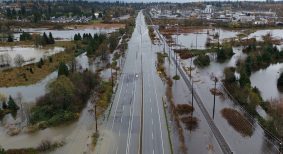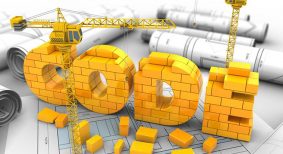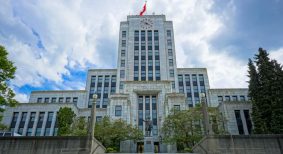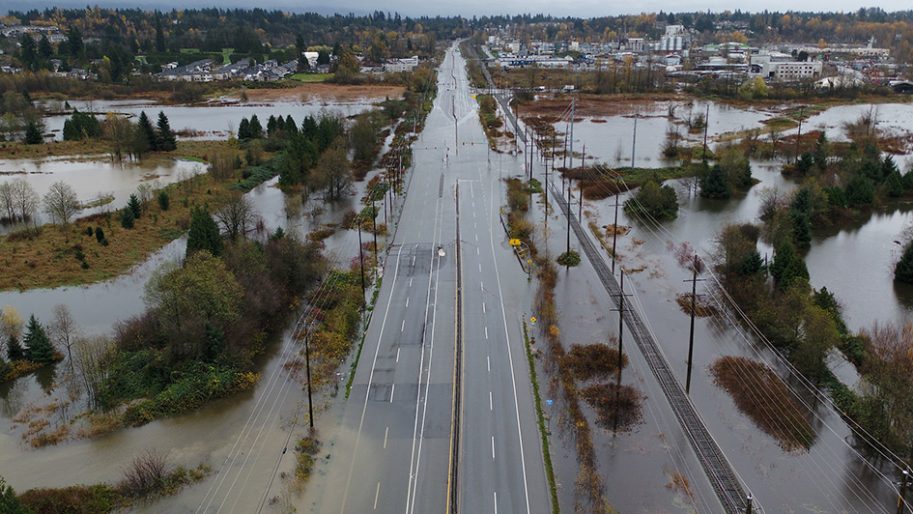In B.C. annual flood-related costs are expected to surpass $3 billion by 2030 – more than eight times the projected costs for Quebec, the next most-affected province. And the province’s exposure to flood risk damage is even more dire, estimated to rise to $1.1 billion by 2030.
To say flood risks are getting worse is an understatement. And on the construction jobsite, heavy rains, rising water tables, and unpredictable ground conditions can quickly derail timelines. Even minor flooding can cause major setbacks. But the real impact of flooding goes beyond repair bills. Delays, equipment failures, and jobsite disruptions can ripple through your bottom line.
We can never completely remove risk from the jobsite, but when it comes to floods, we have the solutions. By using the right equipment, we can minimize the risks of costly disasters. And when there’s a contingency plan in place, it’s easier to assess risks, keep workers safe and navigate regulations. Working with a reliable and trusted equipment rental partner is key. And doing so proactively means you can keep projects on track, minimize disruptions, and stay ahead if flooding threatens.
Planning ahead can make all the difference
Better planning doesn’t just mean access to the right equipment at the right time. It can also help keep projects on schedule, even in emergency situations. It starts with checking your site for flood risks – like how close it is to water or flood zones, and whether it’s prone to high groundwater or heavy rain. When this is done, it allows you to better plan for the equipment you’ll need when the time arises. What size pump would you need to move water or sewage efficiently? Large dewatering and sewage pumps can handle tough conditions and remove water quickly, while smaller, more economical options may be sufficient for minor water removal.

By identifying flood risks early you can also determine the type and volume of drainage required. Systems must be installed, maintained, and regularly inspected, so be sure to consult an expert. High-value subgrade equipment like electrical components should only be installed once drainage systems are in place and fully operational.
Don’t forget to plan for equipment storage. Water-damaged equipment can lead to costly project delays, not to mention the risk of non-compliant equipment. Additional protection plans can reduce the costs associated with rental equipment loss or damage while it’s under your care. But remember: review and understand your responsibilities before signing any rental agreement.
Develop a contingency plan and evaluate as you go
Wet, unstable excavations can damage public utilities, flood local roads, and increase the likelihood of trench collapses or cave-ins. When multiple floods hit the same area, demand for contractors and pump and power equipment spikes. Acting early ensures you’re equipped and in control – without having to compromise or make do.
You may have already completed your flood risk assessment, but do you have a contingency plan in place? This can help to identify future hazards and outline the necessary actions and resources to manage them. Prioritize the most critical areas. Next you’ll want to select the right equipment, so it’s ready exactly when (or if) you need it.
Think about your best and worst case scenarios. Maybe you don’t need to call in the equipment you planned for. But with a solid contingency plan, you’re ready. Being prepared before water levels rise can prevent a lot of headaches.
Conditions can change, and the equipment that worked in one phase may not be suitable for the next. Reassess risks throughout your project’s life cycle and keep your rental provider in the loop to ensure you have the right solutions at every stage.
Worker safety is always the number one priority
Uncontrolled groundwater can cause floods in excavated areas or street potholes, compromising structures and potentially damaging construction equipment and materials. Equipment can be replaced, damage can be repaired. But worker safety is non-negotiable.
Flooding poses a significant hazard during trench work, potentially causing soil instability, trench collapses, and worker injuries. It’s one of the most hazardous activities in construction. Identifying and understanding these hazards is the first step in mitigating them.
Any project that requires moving water, sewage or wastewater will also have specific permitting and regulations. Permits are required when discharging into public sewer systems or the natural environment, or even when groundwater is taken for activities such as dewatering. If you’re working in an environmentally sensitive area, the right equipment keeps pollutants out of local waterways or streams. Your rental provider should be able to offer specifics in dealing with permitting and compliance monitoring. They can guide you through the regulations in your area while putting in place preventative measures to reduce risks of flooding.
You want the best for your project and so should your equipment provider
Staying ahead of the competition, keeping rising costs down, streamlining processes AND keeping crews safe is a tall order.
Choose the best solutions for your project, from pumps and power generators to trench safety and heavy equipment. A rental partner should be invested in your business and on board to support your projects to help ensure work is completed on time. This means identifying potential challenges along the way, assessing specific project needs and recommending the best solution at an efficient cost.
Jason Bunston is general manager of Cooper Pump & Power.










